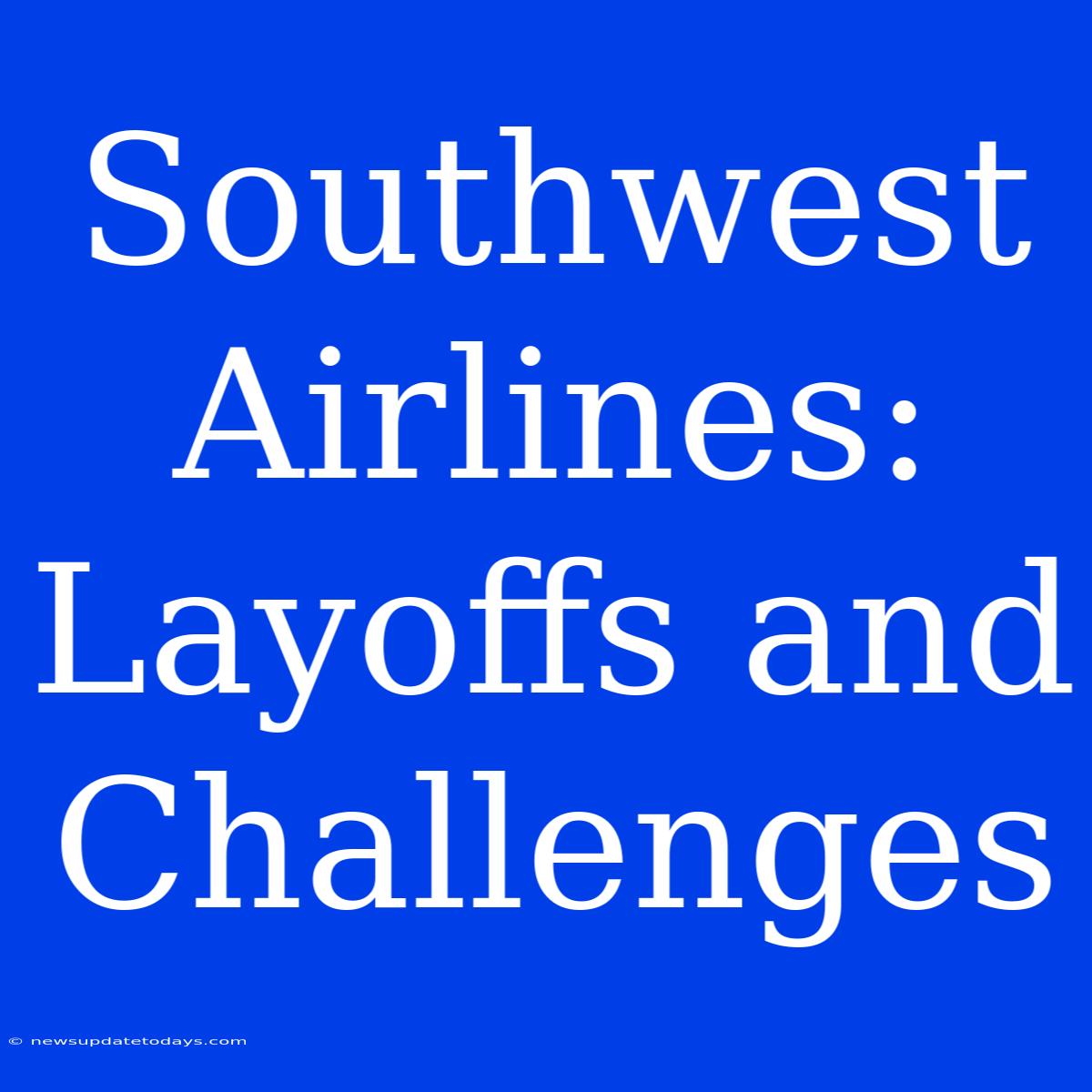Southwest Airlines: Navigating Turbulent Skies – Layoffs and Challenges
Southwest Airlines, once a beacon of stability and employee satisfaction in the airline industry, has recently faced significant headwinds, leading to layoffs and operational challenges. This article delves into the factors contributing to this downturn, exploring the implications for employees, passengers, and the airline's future.
The Perfect Storm: A Confluence of Issues
Southwest's current struggles aren't attributable to a single cause, but rather a complex interplay of several factors:
1. Operational Meltdowns:
The airline experienced several major operational meltdowns in late 2022, resulting in widespread flight cancellations, baggage handling issues, and significant passenger inconvenience. These disruptions stemmed from a combination of factors, including:
- Outdated technology: Southwest's legacy technology systems struggled to cope with the scale of disruptions, hindering efficient rescheduling and communication.
- Staffing shortages: While not solely responsible, understaffing exacerbated the impact of the initial disruptions, making recovery efforts even more challenging.
- Severe weather: While weather events are unavoidable, Southwest's response to them highlighted vulnerabilities in its operational resilience.
2. The Impact of Layoffs:
Following the operational meltdowns, Southwest announced layoffs, impacting various departments. These job cuts added another layer of complexity to the airline's recovery efforts, potentially hindering its ability to address underlying operational weaknesses and improve customer service. The layoffs sparked concern about employee morale and the potential for further disruption.
3. Rising Costs and Inflation:
The airline industry, like many others, is grappling with rising fuel costs and inflationary pressures. These increased expenses put pressure on Southwest's profitability and forced difficult choices regarding cost-cutting measures.
4. Increased Competition:
The airline industry is fiercely competitive. Southwest faces pressure from both established carriers and low-cost rivals, requiring it to maintain operational efficiency and a competitive pricing strategy to retain market share.
Looking Ahead: Recovery and Resilience
Southwest's recovery will require a multi-pronged approach:
- Investing in Technology: Upgrading outdated technology systems is paramount to improving operational efficiency and resilience. This includes investing in scheduling software, crew management tools, and improved communication systems.
- Strengthening Workforce: While layoffs were necessary in some areas, Southwest must ensure adequate staffing levels, particularly in crucial operational roles, and prioritize employee training and development.
- Improving Operational Processes: A thorough review of operational processes is crucial to identify vulnerabilities and implement solutions that prevent future disruptions. This includes improved contingency planning and better communication protocols.
- Focusing on Customer Service: Regaining passenger trust is vital. Southwest needs to prioritize customer service and demonstrate a commitment to addressing passenger concerns promptly and effectively.
Conclusion:
Southwest Airlines' recent challenges are a stark reminder of the complexities and volatility within the airline industry. Addressing the underlying issues, including technological modernization, improved workforce management, and a focus on operational efficiency and customer service, will be critical to its long-term success and ability to regain its reputation as a reliable and customer-centric airline. The path to recovery won't be easy, but with strategic investment and a renewed commitment to its employees and customers, Southwest has the potential to navigate these turbulent skies and emerge stronger.

